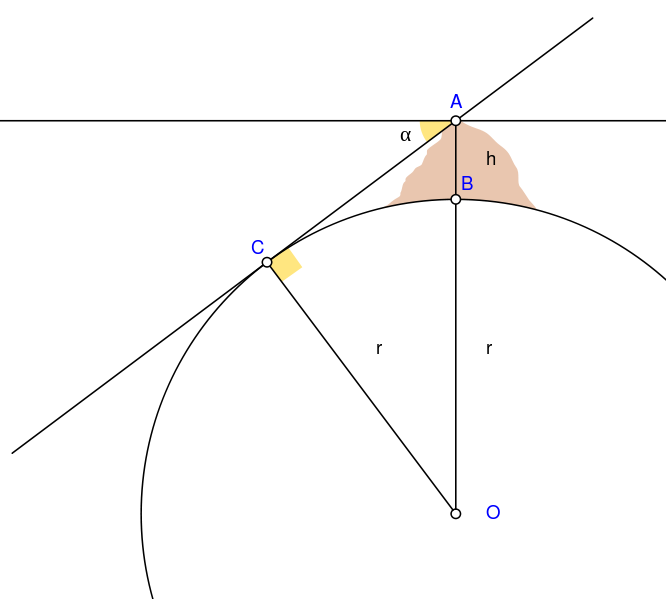Ladawan:Abu Reyhan Biruni-Earth Circumference.svg

Size of this PNG preview of this SVG file: 666 × 599 na pixel. Ibang mga resolusyon: 267 × 240 na pixel | 533 × 480 na pixel | 853 × 768 na pixel | 1,138 × 1,024 na pixel | 2,276 × 2,048 na pixel | 1,000 × 900 na pixel.
Orihinal na file (SVG na file, nominal na 1,000 × 900 (na) pixel, pakadakula: 16 KB)
Kasaysayan kan file
Pinduton an sarong petsa/oras para mahiling ng file sa puntong idto.
| Petsa/Oras | Thumbnail | Sukol | Paragamit | Komento | |
|---|---|---|---|---|---|
| presente | 05:25, 2 Mayo 2010 |  | 1,000 × 900 (16 KB) | Nevit | Crop |
| 05:21, 2 Mayo 2010 |  | 1,390 × 1,220 (16 KB) | Nevit | Yellow removed | |
| 05:19, 2 Mayo 2010 |  | 1,390 × 1,220 (16 KB) | Nevit | Image version | |
| 05:18, 2 Mayo 2010 |  | 640 × 480 (22 KB) | Nevit | {{Information |Description={{en|1=Biruni (973 - 1048) developed a new method using trigonometric calculations to compute earth's circumference based on the angle between the horizontal line and true horizon from a mountain top with known height. He calcu |
Paggamit sa file
Ginagamit kan minasunod na pahina an file na ini:
Pankinaban na paggamit sa file
Ginagamit kan mga minasunod na wiki an file na ini:
- Paggamit sa af.wikipedia.org
- Paggamit sa ar.wikipedia.org
- Paggamit sa bn.wikipedia.org
- Paggamit sa bs.wikipedia.org
- Paggamit sa diq.wikipedia.org
- Paggamit sa en.wikipedia.org
- Paggamit sa es.wikipedia.org
- Paggamit sa fa.wikipedia.org
- Paggamit sa fr.wikipedia.org
- Paggamit sa he.wikipedia.org
- Paggamit sa hr.wikipedia.org
- Paggamit sa id.wikipedia.org
- Paggamit sa it.wikipedia.org
- Paggamit sa ja.wikipedia.org
- Paggamit sa ps.wikipedia.org
- Paggamit sa pt.wikipedia.org
- Paggamit sa pt.wikibooks.org
- Paggamit sa ro.wikipedia.org
- Paggamit sa ru.wikipedia.org
- Paggamit sa sd.wikipedia.org
- Paggamit sa sh.wikipedia.org
- Paggamit sa sr.wikipedia.org
- Paggamit sa ta.wikipedia.org
- Paggamit sa tr.wikipedia.org
- Paggamit sa tt.wikipedia.org
- Paggamit sa uk.wikipedia.org
- Paggamit sa uz.wikipedia.org
- Paggamit sa www.wikidata.org
Hilingon an kadagdagan na pankinaban na paggamit sa file na ini.
